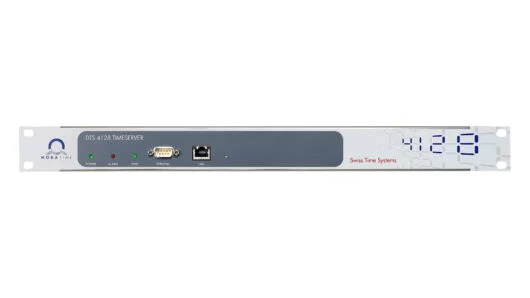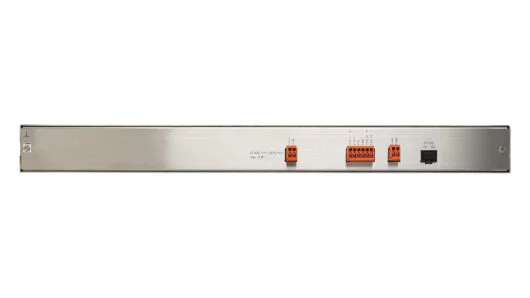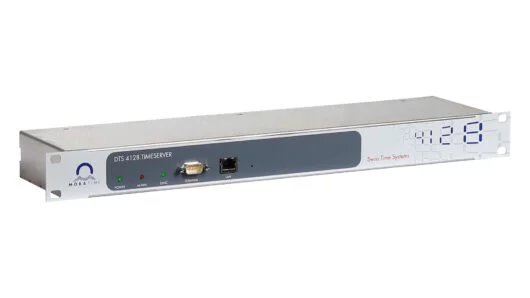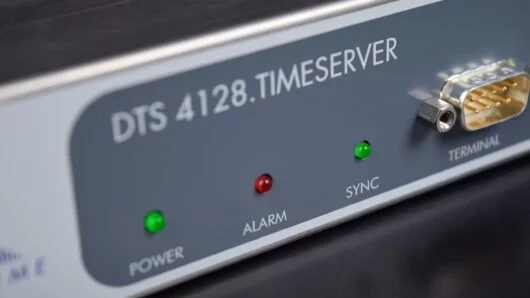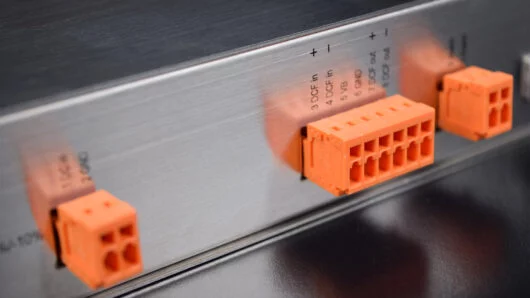- VENDITE +39 0321 806957
- Assistenza:
DTS 4128.TIMESERVER
NTP TIME SERVER
DTS 4128.TIMESERVER
DTS 4128 è un riferimento temporale altamente preciso, impiegato nelle reti di medie dimensioni (IPV4/IPV6).
| Oscillator type: | TCXO |
| 1 LAN port (RJ45): | provides NTP ( |
| Outputs: | 1x DCF current loop output |
| High precision time: | Time reception from GPS |
| Redundancy: | master-slave operation with automatic switch over in case of an error |
| Configurazione IP | DHCP, static IP |
| Power supply | DC input: 24 VDC + 20 % / - 10 % / max. 10 W |
| Accuratezza | GPS (DCF input) to NTP server: typical < ± 100 μs / GPS (DCF input) to DCF output: typical < ± 10 μs |
| Operation | Serial terminal via RS232 / LAN |
| Time-keeping | Synchronized with GPS |
What is the difference between GNSS and GPS?

GNSS stands for Global Navigation Satellite System, and is an umbrella term that encompasses all global satellite positioning systems. This includes several constellations of satellites orbiting over the earth’s surface and continuously transmitting signals providing an autonomous geo-spatial positioning with global coverage.
The GPS constellation (developed and controlled by the USA) is still the most widely used GNSS in the world but major countries have now developed their own constellation: Glonass (Russia), Beidou (China), and Galileo (Europe) with improved accuracy
GNSS is used in collaboration with GPS systems where all GNSS receivers are compatible with GPS, but GPS receivers are not necessarily compatible with GNSS.
A GPS receiver has been designed to receive the GPS constellation only (24 satellites) when GNSS-compatible equipment can use navigational satellites from other networks (each network is controlling between 24 and 30 satellites). It is therefore recommended to use GNSS receivers for positioning and timing applications.

GNSS stands for Global Navigation Satellite System, and is an umbrella term that encompasses all global satellite positioning systems. This includes several constellations of satellites orbiting over the earth’s surface and continuously transmitting signals providing an autonomous geo-spatial positioning with global coverage.
The GPS constellation (developed and controlled by the USA) is still the most widely used GNSS in the world but major countries have now developed their own constellation: Glonass (Russia), Beidou (China), and Galileo (Europe) with improved accuracy
GNSS is used in collaboration with GPS systems where all GNSS receivers are compatible with GPS, but GPS receivers are not necessarily compatible with GNSS.
A GPS receiver has been designed to receive the GPS constellation only (24 satellites) when GNSS-compatible equipment can use navigational satellites from other networks (each network is controlling between 24 and 30 satellites). It is therefore recommended to use GNSS receivers for positioning and timing applications.

